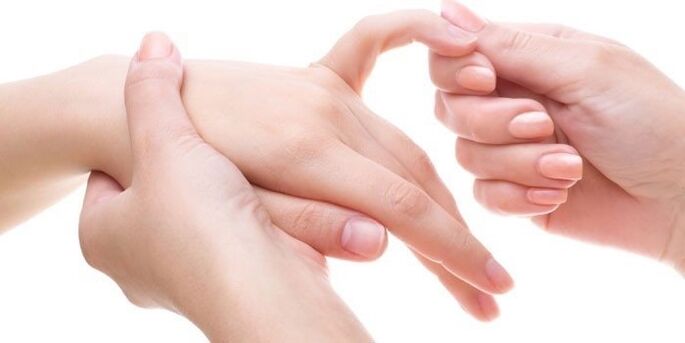
Hand joint pain not only interferes with normal life, reduces physical activity, and leads to impaired performance, but also worsens emotional state due to recurring pain and discomfort.
This is why when a person has pain in the finger joints, he is first interested in the causes of the phenomenon and possible treatments.
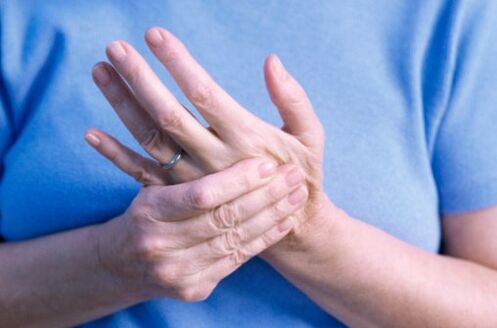
cause of pain
Hand pain can be caused by a variety of conditions, many of which have very similar symptoms.Most diseases are chronic and the prerequisites for their development are often overlooked.Let's find out why the finger joints of one or both hands can be injured.
Rheumatoid Arthritis
Rheumatoid arthritis is a progressive connective tissue disease that affects the joints (primarily the periphery). Cartilage destruction occurs due to chronic inflammation of the synovium. Tissues around the joint are affected. The development of pathology is the result of immune self-attack.The clinical presentation is characterized by:
- destruction of cartilage tissue;
- osteoporosis;
- pain, joint deformities (first of the hand), subluxation, contractures;
- Deterioration of the state of blood vessels, damage to the lymph nodes;
- changes in the skin, nails, increased pigmentation;
- Formation of certain rheumatoid nodules;
- heart disease (rheumatoid carditis);
- Dystrophic changes in muscles;
- Various pathologies of the kidneys (most often amyloidosis), liver;
- Gastrointestinal dysfunction;
- Nervous system diseases, rheumatoid neuropathy.
The disease can be caused by infection, hypothermia, trauma, physical or nervous tension.There is a genetic predisposition to this disease.Women are about 3 times more likely to develop arthritis.
The earliest and most important symptom is a feeling of general morning stiffness, especially in the joints of the hands, which disappears after physical activity. In the early stage, the general condition may deteriorate temporarily, with periodic pain in the joints of fingers and toes, loss of appetite, rapid heartbeat, sweating, and hypothermia.
Later, the pain -- mainly in the small joints of the hands and feet -- intensifies, especially in the morning, after going to bed and during exercise.Morning stiffness is prolonged and becomes painful.The mobility of the joints is increasingly restricted. Marked inflammatory edema, hyperemia occurs, skin temperature rises above the site of inflammation, and fever begins.
Rheumatoid arthritis is characterized by alternating periods of exacerbation and remission, sometimes lasting months or even years. Each time it deteriorates, the process covers new joints.
osteochondrosis
Osteochondrosis of the spine causes signs of back, neck and low back pain, neurovascular disease, herniated discs, impaired blood flow in the vertebral arteries, compressed nerve roots, and other neurological symptoms. Most of the time, the disorder is accompanied by numbness in the fingers, but the pain can be mistaken for joint pain.
Osteochondrosis. Kimberke disease
Finger pain can be caused by osteochondrosis - necrosis of bone tissue caused by increased mechanical stress, mainly in children and adolescence. In adults, the disorder is diagnosed less frequently.Injury, functional overload, infection, rapid growth in children, physical characteristics and sometimes vitamin imbalances can trigger the development of pathology.
One such disorder is Kim Burke's disease, which affects the wrist joint. The main feature of this type of osteochondrosis is 18- to 30-year-old males (locksmiths, turners, carpenters, carpenters) with chronic microtrauma or hand strain. Complex symptoms include:
- Persistent pain in fingers and wrists;
- persistent swelling;
- Increased pain when pressing on the wrist;
- In the final stage of the disease, the bone is destroyed and the wrist joint is subluxed.
Usually, the process affects only one side.
reactive arthritis
A recent infectious disease (1-1. 5 months ago) and the development of joint inflammation after it may explain why the fingers on the hand hurt, especially when flexed. Reactive arthritis may be the result of an immune response to microbial antigens located outside the joint, which leads to the development of immune complex synovitis in the synovium.
Symptoms of the disease are as follows:
- pain in the affected joints, tendons;
- deterioration of the skin condition, changes in the nails;
- Genitourinary system, cardiovascular, lymphatic system diseases.
The clinical manifestations of reactive arthritis are varied and depend on the pathogen of infection: Streptococcus, Salmonella, Meningococcus, Shigella, etc.
gout
Gout belongs to the group of metabolic arthritis - diseases of the musculoskeletal system caused by metabolic disorders, in this case - uric acid. The disease mainly affects men over the age of 40, but gout can also occur in young adults in their 20s and 30s and menopausal women.
Disorders of purine metabolism may be caused by:
- Increased synthesis due to genetic traits;
- Renal Failure;
- some blood disorders;
- take medicine;
- Eating large amounts of foods rich in purines and fats (meat, fish), alcohol;
- Infect;
- A combination of factors that affect uric acid metabolism.
The disease is accompanied by the development of hyperuricemia - an excess of uric acid in the serum, which leads to the deposition of urate in joint tissue.
Gout is characterized by an attack-like course in which more and more joints and tendons are involved, with progressively visible deformity, stiffness, osteoarthritis, and the formation of tophi (gout nodules).
Symptoms of inflammation worsen as:
- severe pain, usually at night;
- swollen joints, congestion;
- weakness, fever, chills;
- increased tension;
- bowel disorders.
The localization of gouty arthritis in the facet joints of the hand is atypical. However, gout can be a very likely explanation for finger joint pain.
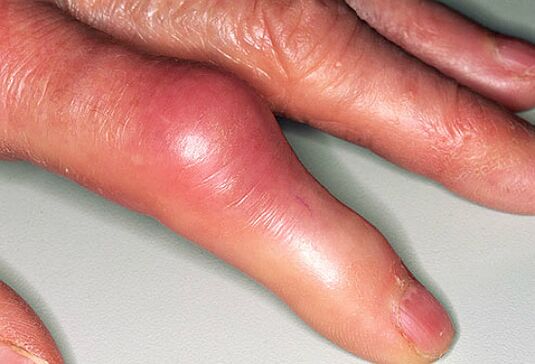
psoriatic arthritis
People with psoriasis often develop chronic inflammation - psoriatic arthritis, whose classic form is thought to be damage to the joints of the hands and feet. The disease usually develops unknowingly with a gradual increase in symptoms, although acute attacks may sometimes occur.You can suspect arthritis by the following signs:
- joint pain in the fingers and feet in the morning or throughout the day;
- have painful swelling;
- Cyanosis of the skin on the joints;
- Nutritional changes occur.
The failure of future joints becomes the cause of finger deformation, contractures, leading to the development of chronic synovitis, arthropathy.
Extra-articular rheumatism
Extra-articular rheumatism, a form of extra-articular soft tissue disease, often causes pain in the fingers. The main factors in development are injury, prolonged rigid movements, hypothermia, humidity, infection, and often a lack of nutrients and blood supply.Pain can be due to:
- Tendinitis - degenerative disease of the tendon;
- Tenosynovitis (otherwise - tenosynovitis, ligamentitis) - inflammation of the middle part of the tendon, lining of the vagina, extra-articular ligaments;
- Bursitis - An inflammatory process in the serous pocket, usually due to tenosynovitis.
In the hand, the tendons of the wrist and hand are most commonly affected, which is related to their almost constant functional stress.Most often, the cause of pain on the entire surface of the fingers or in the joints of the hand is a syndrome caused by:
- de Quervain disease - tenosynovitis of the tendon responsible for abduction and extension of the thumb;
- Carpal tunnel syndrome - tenosynovitis of the finger flexors, often combined with Guyon's canal syndrome - compression of the palmar ligament of the ulnar nerve and ulnar artery;
- tendon and ligamentitis of the wrist;
- Nott's disease ("snapping" fingers), which affects the superficial flexor tendons and their sheaths of the fingers;
- Bursitis (tenosynovitis).
Pain usually comes on or increases with exercise, disturbing at night.Swelling, stiffness, and sensory disturbances may occur.
Osteoarthritis
The degenerative dystrophic process with osteophyte formation in articular cartilage - osteoporosis - is the most common variant of joint pathology and its frequency increases with age. It occurs for two reasons: increased mechanical shock to the joint and cartilage degeneration.
Injuries to the hand joints cause pain in the fingers or the entire palm, at first only in flexion, during heavy physical exertion, and then even at rest, in the morning and sometimes at night.In addition, the disease is accompanied by:
- stiffness, contractures;
- joint deformities;
- Sometimes hot and swollen.
Osteoarthritis is characterized by a long course of symptoms with gradual worsening, usually without abrupt deterioration. The main type of disease affecting the hand is osteoarthritis of the interphalangeal and metacarpal joints.
%20and%20affected%20by%20osteoarthritis%20(right).jpg)
systemic lupus erythematosus
It is an autoimmune multi-syndromic disease with a chronic course, systemic vascular damage, and connective tissue changes. It mainly affects teenage girls and young women in their 20s and 30s.
The development of the disease may be imperceptible, or it may be acute and sudden. Onset gradually on the background of weakness, weight loss, hypothermia, signs of arthritis (synovitis), mild skin manifestations. Sharp - characterized by severe pain in the joints, fever, and a bright rash on the skin.In addition, the disease may be accompanied by:
- hair loss, nail changes;
- sensitivity disorder;
- stomatitis;
- Damage to the cardiovascular system, most commonly pericarditis;
- Sometimes muscle atrophy (mainly in the hands), deformities of the fingers, wrists, and ankles;
- Lung diseases (pneumonia, candidiasis, tuberculosis, etc. );
- kidney damage (lupus glomerulonephritis);
- vegetative and emotional disorders;
- Decreased intelligence, hallucinations, convulsions.
Arthritis is the most common symptom of systemic lupus erythematosus.
This is why skin erythema and discomfort due to an injury to the finger joints (especially if the pain is due to the force of squeezing the hand) is the basis for checking for this disease.
diagnosis
Since hand joint pain can be caused by a variety of conditions, it is necessary to determine the exact cause of finger stiffness, swelling, and/or injury.Diagnose using the following studies:
- radiography;
- flicker scan;
- Ultrasonography;
- Magnetic Resonance or Computed Tomography;
- immunological tests;
- Laboratory analysis of blood and urine.
If necessary, in order to accurately diagnose the cause of finger joint pain, a tissue biopsy is performed to analyze synovial fluid.
treatment method
If your fingers are sore and swollen or your joints are injured, it is impossible to independently determine what to do. Treatment is specifically prescribed by a doctor after diagnosis and examination.
medical treatement
If the pain in the fingers of the hand (during flexion, abduction, rest) is severe, short-term analgesics are allowed until specialist examination.
The joints should not be heated, and anti-inflammatory and antibacterial agents should not be taken uncontrollably.
You can use ointments to relieve acute pain in the finger joints.
Further treatment depends on the disease and is usually complex.Treatment targets:
- Medications to relieve exacerbations, pain relievers with painkillers, anti-inflammatory ointments, gels;
- Regarding the normalization of metabolic, immune processes;
- Restores blood supply, improves joint nutrition and increases its function.
Treatment of syndromes that develop in the context of underlying pathology. Use blood purification procedures: plasma exchange, blood sucking. In severe cases, resort to surgical treatment methods.
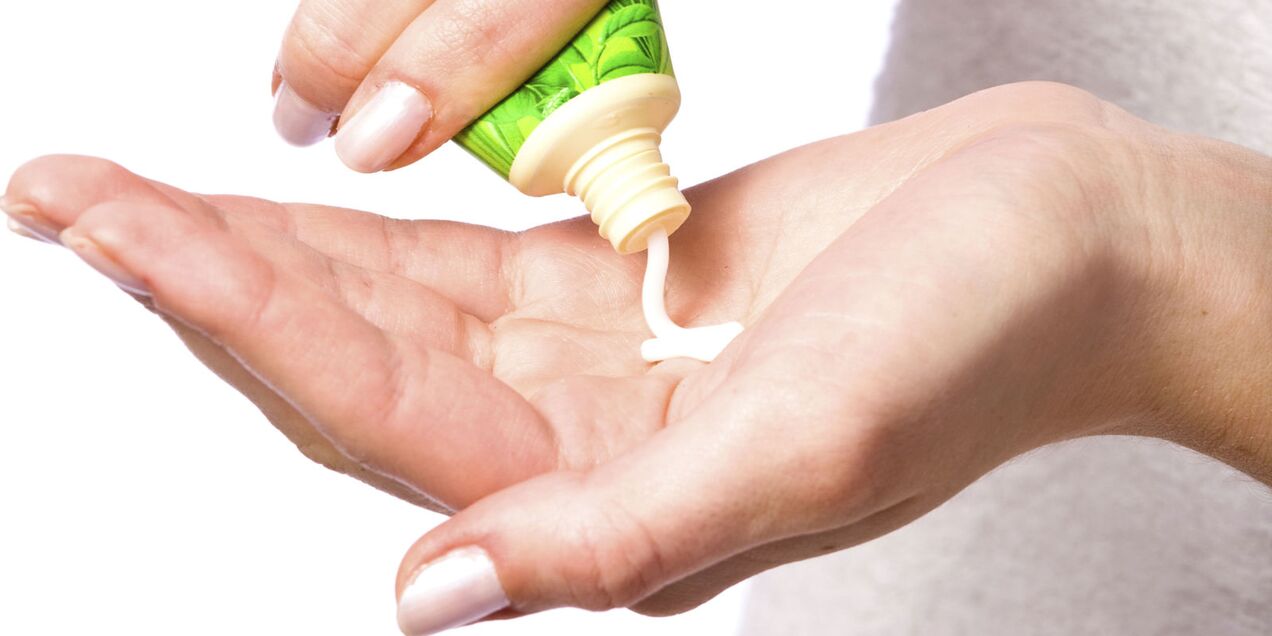
physiotherapy
If the exact cause of the finger joint injury is identified, the main treatment is supplemented by various physiotherapy procedures and balneotherapy methods: electrophoresis, mud wraps, pulse therapy, etc.
Physiotherapy improves metabolic processes and normalizes blood circulation in the fingers.
physiotherapy
Basic treatment necessarily involves joint unloading, however, it is necessary to restore range of motion. To correct movement disorders of the fingers on the hand, gymnastics is performed through various compressions, squeezes, abductions, stretches, which allow you to restore joint mobility and sensitivity to the end phalanx. Pain in the finger joints requires careful introduction of new exercises and gradual increases in load.
massage class
Therapeutic massage improves tissue nutrition and helps relieve symptoms of disease.However, due to pain in the finger joints, massage is often contraindicated, so it must be treated with a doctor's permission.
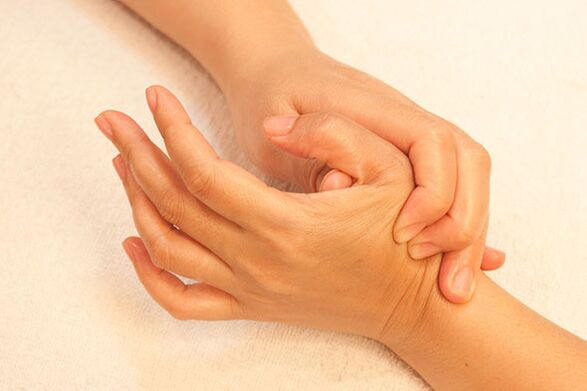
folk remedies
Phytotherapy, compresses, rubs, prepared according to folk recipes, may be useful in the absence of contraindications and without refusal of medication. If the fingers on the hand are too painful for a prolonged period of time, they can help relieve the condition.














































